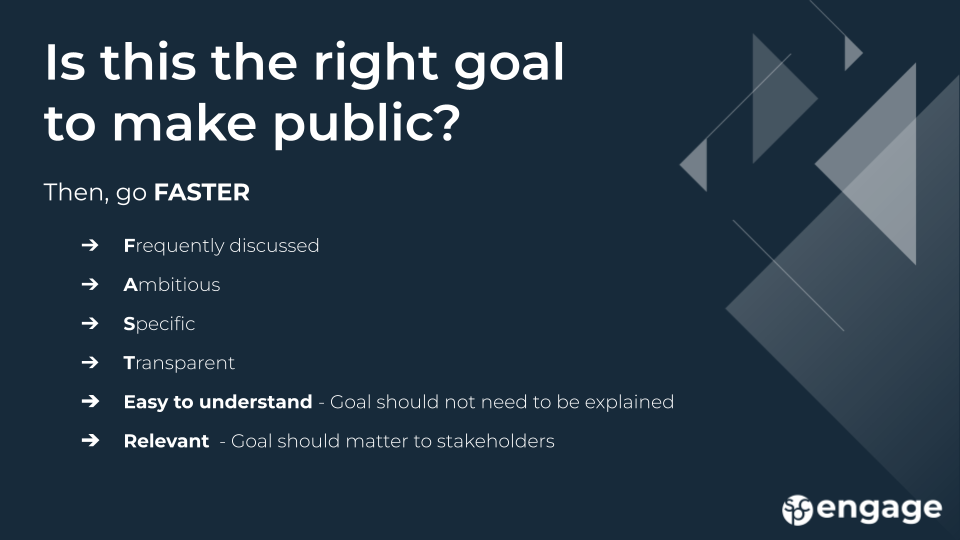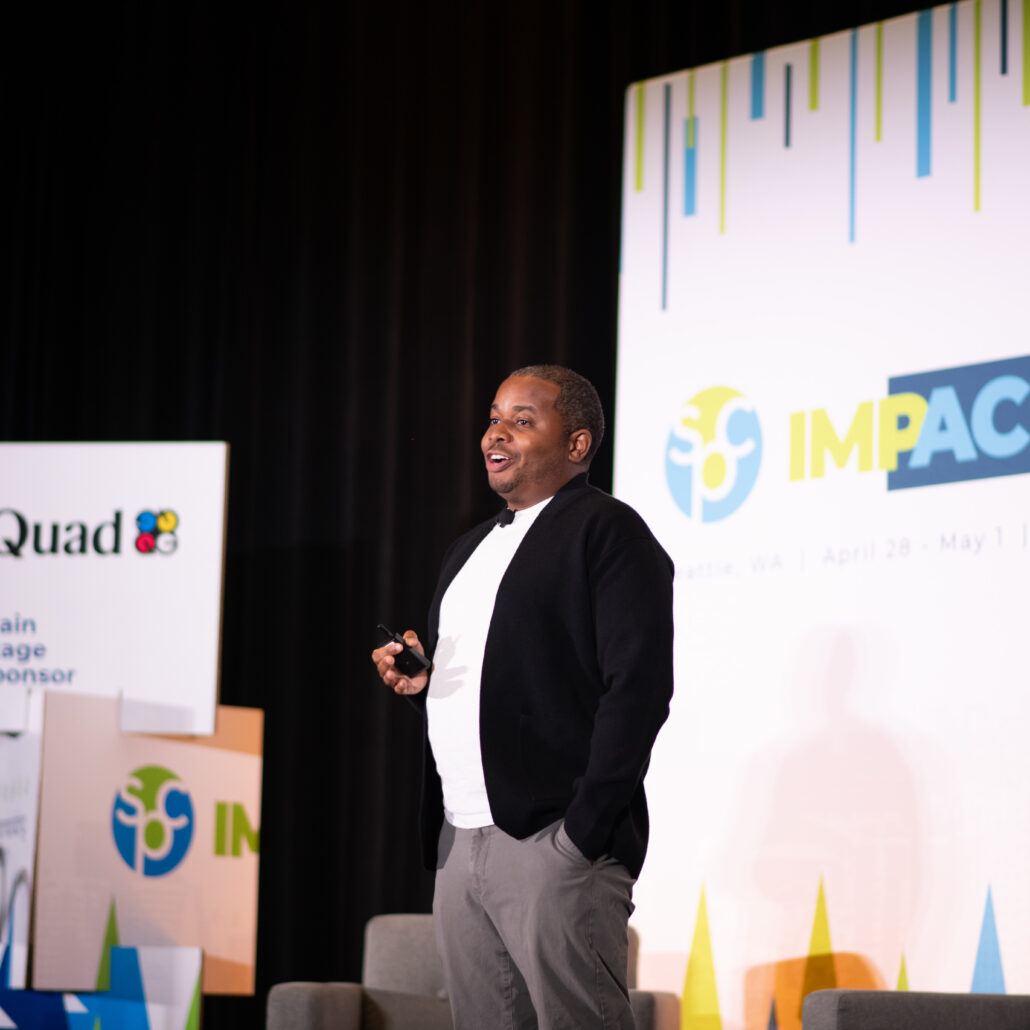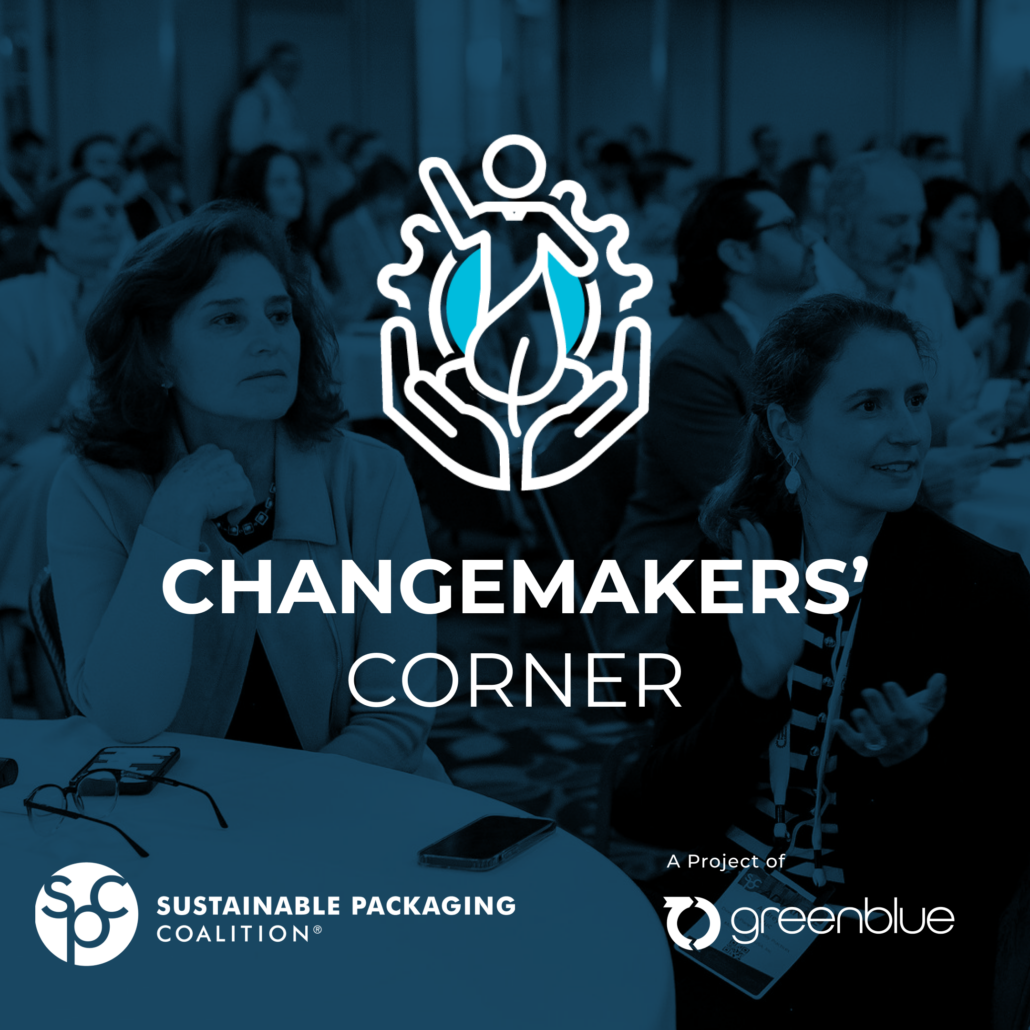Common concerns in sustainability goal setting include: Are we aiming high enough? Are we targeting the right problems? Are we successfully communicating our efforts to our customers and stakeholders? In July of 2022, at SPC Engage in Montreal, Olga Kachook, Director of Bioeconomy and Reuse Initiatives at GreenBlue, and Frances Mazur-Batistoni, Senior Consultant, Anthesis Group, introduced a framework for assessing public-facing sustainability goals.
FASTER is built on the FAST goal setting framework proposed by Charles Sull and Donald Sull at the Sloan Business School at the Massachusetts Institute of Technology (MIT). FAST stands for frequently discussed, ambitious, specific, and transparent. This framework was developed to account for some of the shortcomings of the popular SMART (specific, measurable, attainable, realistic, and timely) goals framework. SMART is a useful tool for developing goals that are designed first and foremost to be achieved. This can be helpful in addressing shortcomings and empowering individuals and teams to perform better but is not necessarily helpful in exceeding expectations in the long run.
FAST is a framework designed to foster both ambition and achievement. “Frequently discussed” means the goal is embedded into regular communications, not relegated to infrequent check-ins. Frequently discussing a goal keeps it front of mind and more likely to be consistently worked towards.
“Ambitious” does not mean impossible to reach, but that the goal itself is a stretch from the current state. For something to be ambitious, oftentimes exactly how to achieve the goal at the outset is unknown and must be determined once the target is set.
“Specific” is one area of overlap between FAST and SMART goals. Specificity is in the targeting of a single performance indicator. We can’t effectively reach goals if we are uncertain about their scope. Being specific in goal setting can mean setting multiple goals for different indicators rather than lumping multiple indicators into one goal.
The last letter in FAST stands for “transparent” meaning everyone on the team knows what goal they are working towards both individually and as a team. This encourages both accountability and partnership in reaching goals.
While it may sound counterintuitive to think that a goal designed to be achieved could be a shortcoming, ambition is lost when too much focus is placed on being realistic. Goal setting research has found that people are more likely to perform higher when given ambitious goals, rather than told to “do their best.” Thus, it could be argued that focusing primarily on setting goals that are most likely to be achievable is actually limiting potential, rather than encouraging it. The benefit of the FAST framework’s “A for Ambitious” is that it explicitly calls out ambition as a good thing. This is especially useful for sustainability goals because we need to go further, faster, and not plod along with business-as-usual with incremental changes to the status quo.
As shared by Kachook and Mazur-Batistoni at SPC Engage 2022, FASTER builds on the FAST framework by including the components of Easy to Understand and Relevant as considerations for making a goal available to a wider audience.

Ease of understanding to a broad audience is critical when making goals public. If goals are too “in the weeds”, communication to a broad audience might actually be closer to greenwashing instead of informing them on the progress and values a company is working towards. If a sustainability goal is written in a way that is not easy to understand, a consumer could interpret it outside the intended scope or be unduly swayed by something that sounds like a good idea but might not actually be best practice. Under this framework, goals that are well written do not need to be explained and they should matter to your stakeholders.
Relevant means the goals should be important to your stakeholders and material to the industry’s impacts. If you are a personal care brand, public social sustainability goals around improving access to hygiene could make sense, but it might not make sense for you to have public goals around “ending hunger”, as it won’t be perceived as authentic. Increasingly, ambitious goals are also more relevant. Easy, table-stakes goals aren’t seen as relevant by sustainability conscious consumers anymore. If you’re leaving big issues like climate change or plastic pollution unmentioned in your sustainability commitments, they are less likely to be relevant to that audience. Likewise, goals that might not be relevant for a wider audience include: highly technical and/or material-specific goals, optimization goals that are not explicitly linked to environmental impact, goals that are in conflict with publicly made commitments, or goals that function primarily as virtue signaling.
As sustainability goals continue to evolve within the sustainable packaging industry, this framework could help organizations determine whether or not it makes sense to publish their existing goals and ensure that they will be meaningful to outside stakeholders. The FASTER framework is designed to help evaluate whether or not a goal makes sense for external communications or if it might be better suited for internal communication with more knowledgeable partners. If a goal is a good fit for being shared externally, keeping the FASTER framework in mind can help create meaningful conversation about sustainability efforts, rather than confusing consumers.





